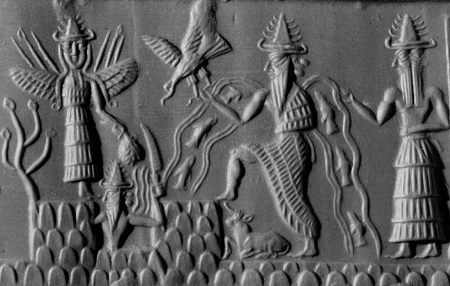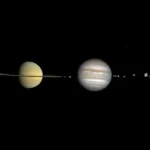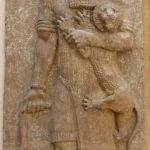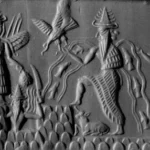The story of the creation of the first man is known in all cultures and religions around the world. Despite minor differences in the accounts, their core is very similar, providing the possibility of a common source. This source may be the oldest of known written accounts, from ancient Sumer, and written by the god Enki, son of Anu.
The 6th clay tablet included in Z. Sitchin’s “The Lost Book of Enki” provides not only an interesting story of the creation of the first humans, but also one that fits the prototype that could have been used by all peoples on Earth.
After many failed attempts, Ninmah, sister of Enki and Enlil, head of the Anunnaki medical team, created a hybrid of an Earth ape-man and an Anunnaki woman. It was a male and was given the name Adamu (he who is like Earth clay). The surrogate mother of the first human was Ninmah herself.
The second hybrid born on Earth was a girl, who was given the name Ti-Amat (mother of life).
Her surrogate mother was Ninki, wife of Enki, who after giving birth stated:
“In your image and likeness was she created”.
After the success of the first hybrid pair, 7 Anunnaki woman volunteers were impregnated to give birth to more hybrids.
Unfortunately, the newly created humans could not reproduce, they had 22 chromosomes, missing one, which was responsible for the reproduction.
In this situation, from Enki’s rib “the essence of life was taken and introduced into Adamu”, and from Ninmah’s rib “the essence of life was taken and introduced into Ti-Amat”.
Adamu and Ti-Amat were placed in the garden of the Edin to live freely and multiply.
Unfortunately, Enki and Ninmah’s brother, Enlil (the biblical serpent) upon learning of the transfer of the “essence of life” to Adamu and Ti-Amat, became furious and expelled them from the garden of the Edin (E.DIN from Sumerian) to the Abzu.
Additional information is that the new beings “did not receive the branches of long life in the tree of their essence”.
The analogy of the first people, their placement in the garden, receiving the essence of life from a rib, and then expelling them, to other well-known accounts is obvious, and the right question should be asked: are the oldest Sumerian accounts the prototype of other, younger histories, written down in various “holy books” around the world? Should we assume that an alien civilization created us, “humans”, in its own image, because we were needed by them?
As always, I leave the answer to each individual.
See also: https://en.wikipedia.org/wiki/Eridu_Genesis





